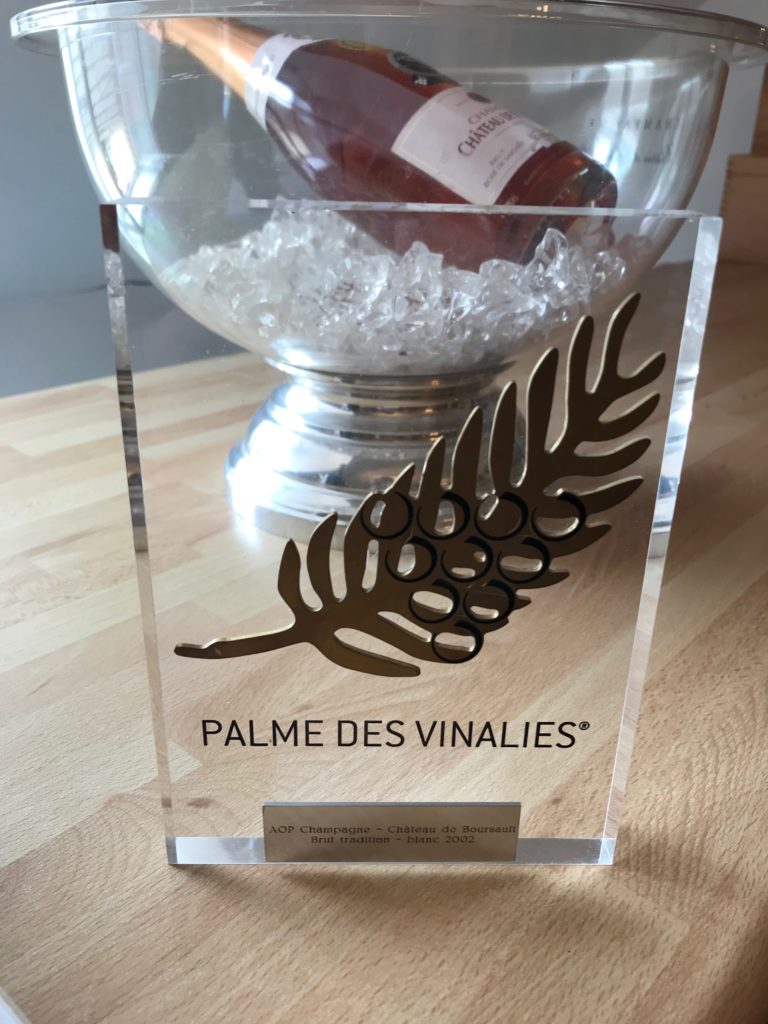
By Patrick Hunt –
Everyone knows Veuve Cliquot Champagne – now in the prestigious LVMH Group – and most know the story of Nicole Barbe Ponsardin, daughter of Baron Nicholas Ponsardin, who founded this grand maison champagne in the 19th century as both a visionary pioneer who helped put champagne on the world map but also as a pioneering woman of genius who overcame great odds in a man’s world – “in an era when women were excluded from the business world…” accpording to Veuve Clicquot’s website – to make her champagne a world-famous desirable. Marrying Francois Clicquot of Maison Clicquot in 1798, she eventually became recognized as the Grand Dame of Champagne for her formidable shrewdness, acuity and high bar for quality.

Even less people know her magnificent Chateau de Boursault which was her residence in the Marne Valley about 10 km west of Epernay, begun in 1843, a little further from Reims, but I had driven there multiple times with friends over the years and even featured a photo of the chateau in a book chapter on champagne but taken above from the Boursault village road. After the Clicquot-Ponsardin heiress, the Duchess of Uze, sold the property in 1913, the Fringhian family bought the Boursault estate with chateau and vineyards in 1927. Last August courtesy of the second generation owner, Alex Fringhian, we were fortunate to book a private appointment for degustation and a visit to this beautiful property and rediscovered the delectable new champagnes grown on the estate.

Almost the entirety of champagne now produced by the current Chateau de Boursault – one of the few true wine estate chateaux in Champagne – derives from the grapes grown on the property – whose north-facing slopes run down to the D3 and almost to the ow-bowed Marne River – and is made with the estate presses and vats and stored in the cellars on the premises, which is unusual in Champagne where everything is done in one property. In addition to Chardonnay grapes, Pinot Noir grapes and Pinot Meunier grapes go into the champagne here to make Brut, Cuvee Prestige (Chardonnay and Pinot Noir), Blanc de Noir (Chardonnay and Pinot Noir) and Rosé de Saignée as well as Brut Prestige, Brut Nature and Millésime (Chardonnay and Pinot Noir). These fine award-winning champagnes can be purchased on the estate or in New York through East Coast negociants but are not always easily accessible in Northern California. Among other awards like the Médaille d’Or au Challenge International des vins 2015, the prestigious Palme des Vinalies was awarded for the Brut in 2002 and the Glass of Bubbly Gold Medal in 2018 in London for the Brut Millésime 2004. Their Brut Blanc has also gained many awards, including a Gold Medal at the Gilbert et Gaillard Guide 2017 and a score of 15.5 out of 20 at the Jancis Robinson Tasting 2017, and most recently the Silver Medal at the Terre de Vins 2020. The Rosé de Saignée also was awarded the Médaille d’Or au Guide Gilbert et Gaillard 2017.
Our degustation with Johann, one of the winemakers, last August included a tour of vineyards along with the 19th century Clicquot elegant chateau and overall estate and some of the cellars. We tasted at least five of the above cuvees and also purchased several bottles to bring home, including the Brut Cuvee Prestige and Brut Blanc de Noir. This was our first degustation in Champagne in 2019 and while we have visited many other champagne producers for decades and continued to visit other more well known producers last August, this could not have been a more magical private tasting to begin our annual pilgrimage. The chateau and tasting is open by private appointment and special events in the restored chateau itself can be arranged by invitation from owner Alex Fringhian. Madame Clicquot would no doubt approve of a visit to her magnificent Boursault chateau – where so many haute-couture celebrations of Reims notables gathered – and where she retired in the mid 19th century and where wonderful and elegant champagne continues to be lovingly produced by the Fringhian Family.







